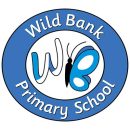n order to help us to develop confident, enthusiastic and inspired writers who can express themselves in a variety of different styles and across a variety of contexts, we follow ‘Pathways to Write’ to ensure we give our children a wide range of writing opportunities by ensuring exposure to a wealth of mapped reading texts.
Our English curriculum has been shaped by our curriculum drivers: Retention of Long-Term Knowledge, Vocabulary, Oracy and Cultural Capital and Life Skills. We have developed and structured lessons to ensure regular opportunities for oracy. These opportunities enable our children to become immersed through a well thought out exploration of the themes generated by our exciting and vocabulary rich texts. The texts used across year groups have been carefully curated, to ensure our pupils are exposed to a wealth of both contemporary and classic texts. Texts that develop cultural capital by ensuring the coverage of a wide range of themes and topics.
Writing tasks are specific and meaningful, and often meet a purpose to engage children and to illustrate how their writing skills can be applied to real life contexts. The curriculum develops our teachers’ knowledge of English through enabling them to immerse our children in an approach that makes clear how to teach reading well and how reading and writing are inextricably linked, such as how one feeds the other and back again. The root for promoting reading and writing in schools is through a rich, reading curriculum.
This has a strong beginning in Early Years where we strive to foster a love for stories. Weekly learning is spring boarded from a carefully selected story with high quality text from celebrated authors. Children learn to love familiar characters from modern classics using rhyming and predictable texts with a planned cycle of vocabulary progression. The settings in the stories help to provide opportunity to learn about local and worldwide geography, history and cultural differences promoting curiosity and helping to set foundations for speaking and listening. This approach reflects the natural curiosity of young children and helps them develop their wider understanding of stories, characters and the inference in the language and pictures in preparation for successful transition into Key Stage 1.
